- Home
- Carolyn Keene
Bad Times, Big Crimes
Bad Times, Big Crimes Read online
Bad Times Big Crimes
So I was sitting with Ned in a lecture, and then bam, Ned’s in a three-piece suit, and I’m in a city hall meeting on how to get through the beginning of the Great Depression. As in the Depression, in the 1930s.
What’s more, there’s a thief to track down. Someone’s robbing local banks of what little money they have. Everyone’s panicked about their money, so the thief could be just about anyone. But after spending just a little time in this odd place, I have a hunch there’s more to it.…
Catch my next case:
Framed
ALADDIN PAPERBACKS
Simon & Schuster, New York
Cover photograph copyright © 2005 by
Corbis
Cover designed by Debra Sfetsios
Ages 8–12
kids.simonandschuster.com
1105
Try Solving This One…
Something really strange was going on. It was almost as if I’d woken up in some sort of alternate universe. I had to do something—fast. “Be right back,” I said to Ned as I slipped out of my seat.
I hurried out of the building and ran to the first newsstand I could find. Reading the front page, I almost fainted.
According to the paper, the year was 1930.
I pinched myself to see if I was dreaming. No dice.
#1 Without a Trace
#2 A Race Against Time
#3 False Notes
#4 High Risk
#5 Lights, Camera…
#6 Action!
#7 The Stolen Relic
#8 The Scarlet Macaw Scandal
#9 Secret of the Spa
#10 Uncivil Acts
#11 Riverboat Ruse
#12 Stop the Clock
#13 Trade Wind Danger
#14 Bad Times, Big Crimes
Available from Aladdin Paperbacks
This book is a work of fiction. Any references to historical events, real people, or real locales are used fictitiously. Other names, characters, places, and incidents are the product of the author’s imagination, and any resemblance to actual events or locales or persons, living or dead, is entirely coincidental.
ALADDIN PAPERBACKS
An imprint of Simon & Schuster Children’s Publishing Division
1230 Avenue of the Americas, New York, NY 10020
www.SimonandSchuster.com
Copyright © 2005 by Simon & Schuster, Inc.
All rights reserved, including the right of
reproduction in whole or in part in any form.
NANCY DREW is a registered trademark of Simon & Schuster, Inc.
ALADDIN PAPERBACKS, NANCY DREW: GIRL DETECTIVE, and
colophon are trademarks of Simon & Schuster, Inc.
Designed by Lisa Vega
The text of this book was set in Bembo.
First Aladdin Paperbacks edition November 2005
Library of Congress Control Number 2004117703
ISBN-13: 978-0-689-87883-1
ISBN-10: 0-689-87883-4
ISBN-13: 978-1-439-11332-5 (ebook)
Chapter 1: The Town Hall Time Warp
Chapter 2: Hello 1930, Good-bye Sanity
Chapter 3: Stranded
Chapter 4: Animal Invasion
Chapter 5: A River Heights Casino
Chapter 6: Hooverville Is Haunting
Chapter 7: When in Doubt, Blame It on a Belgian
Chapter 8: Hasty Conclusions
Chapter 9: Dropping Hints
Chapter 10: Hatching a Plan
Chapter 11: Deuces Wild
Chapter 12: A Little Help from Horsehair
Chapter 13: Gambling with Gangsters
Chapter 14: Gotta Run
Chapter 15: The Not-So-Open Road
Chapter 16: No Place Like Home
Bad Times, Big Crimes
1
The Town Hall Time Warp
I’m sorry, Nancy. Am I keeping you awake?” my boyfriend, Ned Nickerson, asked.
I struggled to answer him between yawns. “It’s not the company—promise.”
“Good thing my ego isn’t too fragile.” Ned took another enormous bite of his hamburger before continuing. “Of course, it can’t be, since I’m dating the kind of person who ignores me half the time because she’s so busy helping out everyone else in the world.”
Glancing at Ned, I couldn’t help but laugh out loud.
“That wasn’t supposed to be funny,” he said. “Can’t you at least pretend to take pity on me?” He smirked.
“It’s not that.” I tried, but failed to keep a straight face. “It’s just—you’ve got ketchup on your nose!”
“I’m surprised you even noticed.”
Though Ned was acting like a wounded puppy dog, I knew he was just kidding around. He’s used to this kind of thing. Why? Well, I’m Nancy Drew, the busiest amateur detective in River Heights. Whenever there’s trouble brewing in town, people call me. Ned’s been my boyfriend for years. He totally understands that my passion for solving mysteries could not and should not be suppressed. Not only is he perfectly happy to help me whenever I ask him to, he’s also happy to step aside when I need the space to do my own thing.
Pretty great, huh?
Not that things were totally perfect. I mean, there was still the issue of the ketchup.
“I cannot take you seriously when you have food on your face,” I teased.
“Ketchup is more of a condiment, wouldn’t you say?”
“Ned!”
As he smiled at me, he revealed his adorable dimples. Then he finally wiped his face. “Better?”
“Much.”
“So whatever happened at the old Burnside Inn?” he asked. “It wasn’t really haunted, was it?”
“Of course not,” I replied. “But I had to stay up all night to prove it.”
The Burnside Inn is an old hotel that’s been for sale ever since the owner, Maxine Burnside, died in a horrible car accident. Last week, rumors started circulating that the place was haunted by Maxine’s ghost. Some concerned citizens came to me, hoping I’d get to the bottom of things. It took me all night, but I finally figured out the real deal. “Turns out the so-called ghost was actually Bob McFadden. He owns a chain of hotels all over the Midwest, and wanted to add the Burnside Inn to his list.”
“I don’t get it,” said Ned. “The hotel was already for sale, right? So why’d he have to go to so much trouble?”
“Sure, he could have just bought the place, but that would have been too easy. He figured if no one else wanted it, he’d get it dirt cheap. All he had to do was scare away the competition.”
Ned shook his head in wonderment. “Amazing what people will stoop to just to save a few bucks.”
I couldn’t agree more.
It’s funny. River Heights is a fantastic place to live. It has everything anyone could ask for in a city. There’s the natural beauty of the river, miles of open fields where horses and cattle graze, and tons of old trees all over town. There’s the culture: We have museums and galleries, a top-rated university, and an award-winning orchestra. And business is booming. Rackham Industries, a major computer company, is headquartered here, and they recruit people from all over the world. The shopping is great too. You can get anything you want downtown: books, music, antiques, sporting goods, jewelry—even gourmet cheese. And the people couldn’t be friendlier.
But I have to say, this city also attracts mischief and mayhem like no place else.
“So, was it a tough case?” asked Ned between bites.
I shrugged. “Not so much. But waiting to catch Bob in the act was pretty time-consuming. He didn’t show up until five a.m.”
“And then you and Bess and George surprised him?” asked Ned.
&nb
sp; I shook my head. “Not quite.” Bess and George are cousins, my two best friends, and my usual partners in crime (or anticrime, really). But the night before they’d been busy. “Bess and George’s greataunt, Eliza, was in town, so they had to be home for dinner. I was on my own. Since I didn’t think it was a good idea to confront Bob by myself—he’s a really big guy—I snuck around and took a bunch of pictures. Then I had to wait until Chief McGinnis rolled into the police station so I could show him the evidence. He took over the investigation from there, but I shadowed him, just to make sure he followed through. So, basically, I pulled an all-nighter. I didn’t get home until noon.”
“And I showed up soon after that,” Ned finished.
“Yup.”
“You don’t have to go to the lecture today,” Ned said. “I totally understand if you need to catch up on sleep.”
“No way would I miss seeing Tracey Gaines,” I exclaimed. “How often does a famous historian come to River Heights to talk about our city’s history of crime?”
Ned laughed. “The lecture is about the Great Depression. The crime stuff is just a small part of it.”
“Small to you,” I argued. “Tracey Gaines’s grandparents were famous gangsters! They totally terrorized the streets of River Heights and lots of other cities all over the country—untraditional behavior for gangsters. I’ll bet she has some wild stories. You couldn’t keep me away if you tried.” I glanced at the clock on the far wall of the diner. “In fact, we should really get going. Are you ready?”
“One sec,” said Ned, polishing off the last of his fries.
I’d inhaled my tuna melt and side of onion rings as soon as the plate hit the table ten minutes before. Solving mysteries always makes me hungry.
Minutes later we were strolling down River Street. Ned had his arm around me and it was oh-so-cozy. I was just relaxing when I spotted the line in front of city hall. The lecture wasn’t due to start for twenty minutes, but there was already a huge crowd. We ran the rest of the way. Once we got inside, we saw that George and Bess had arrived early and saved us some seats.
“Didn’t think you’d make it,” George said as we sat down. “Haven’t you been up for thirty hours straight?”
“And didn’t you wear those same clothes yesterday?” Bess added. The look of genuine concern in her pretty blue eyes cracked me up.
“I can’t keep track. It’s all a blur,” I replied sleepily, dropping into the seat next to Ned. “How’s your aunt?”
“Oh, great,” said Bess. “She thinks it’s so funny that we’re going to a lecture on the Great Depression.”
“Why is that?” asked Ned.
“Well, she lived through it and knows how awful it was,” George explained. “Her family lost their home, and everything. It was such a sad time in our country’s history, she thinks people are crazy for dwelling on it, and—hey, Nancy! Are you listening?”
My eyes flew open. “Sorry,” I said. “These chairs are so comfy.…”
Soon I felt Ned shaking my shoulder. Applause was exploding from around the room. “What’s going on?” I wondered.
“It’s starting now,” he said.
“Huh?” I asked.
“You’ve been asleep for the past ten minutes.”
I sat up straight and looked toward the stage.
A woman was standing behind a large podium. She had shoulder-length red curly hair, and she was dressed in a dark green pants suit. “Good afternoon, River Heights. My name is Tracey Gaines. I’ve been studying the effects of the Great Depression on small cities like yours, and I’m here today to share some of my research. Many of you know the basics of the Great Depression. The stock market crashed on Tuesday, October 29, 1929. Herbert Hoover was the president. Millions of people lost their savings, their jobs, their homes, and most of their possessions. Everyone was touched by the Depression in some way, but small cities like this were particularly vulnerable. They became breeding grounds for criminal activity.”
My ears pricked when I heard that.
“People always think about big crimes happening in large cities like New York, Los Angeles, and Chicago,” said Tracey. “But in fact, in the early nineteen hundreds it was a different story. Small towns and cities were where most of the crime took place. Why? Small cities had small police forces. Imagine trying to stop ten gangsters with a police force of three.
“Second, the first road atlas was put out in 1924, by a company called Rand McNally. The first of its kind, it made escape routes easier to map out. It was also in the nineteen thirties that hard-surfaced roadways were introduced. This made getaways speedier. Criminals could, for instance, hold up a bank in River Heights, speed on over to Columbus to swindle some investors with a fake building project, and then roll into Lexington to fix a poker game, all in the same week.”
George leaned over and whispered, “Sounds like fun, don’t you think?”
Ned and I laughed, but Bess shushed us all.
“Criminal life was so romanticized that some criminals became national heroes,” Tracey continued. “In the nineteen thirties, people talked about gangsters in the same way that people talk about movie stars today. Enter my great-grandparents, Loretta and Clay. But before I begin, let me assure you that our family is much more honest now.”
My eyes flew open at the sound of widespread laughter. Whoops—couldn’t believe I was drifting again. Blinking, I rubbed my eyes.
“Here’s a picture of my great-grandmother,” said Tracey. I was so glad there were some visuals to go along with the lecture—they’d help me stay awake.
The picture that flashed on the screen behind Tracey was a close-up of the famous Loretta Gaines. She was beautiful, with a spark of intelligence in her eye and soft ringlets of hair framing her heart-shaped face. “This is a black-and-white shot, since modern color film wasn’t introduced until 1935. But Loretta had bright red hair, very much like mine. She was small, too. Four feet, ten inches. Of course, she always wore very high heels.”
Tracey pressed a button and suddenly some jazz music began to trill from the city hall’s speakers. The next picture was of Loretta and Clay. Clay was tall and broad-shouldered. He wore a handsome, pinstriped suit and a dark hat. He was winking at the camera. Loretta was in a fancy beaded dress. She had a fur stole slung over one shoulder. The couple stood in front of a fancy old car. They looked as if they were on their way to a party—as if they didn’t have a worry in the world.
“Loretta and Clay had a field day all over the Midwest, swindling everyone they came across before speeding out of town. They rigged card games and set up casinos. Easy to understand how they earned people’s trust—they were such a charming, mesmerizing couple. They loved fancy clothes, fast cars, and all types of excitement. Of course, most exciting to them was scamming people out of their hard-earned cash. It was in the fall of 1930 that they rolled into River Heights.”
“Hey, Nancy,” Ned whispered, tugging on a lock of my hair.
“I’m up.” I forced my eyes open. “This is pretty great, huh?”
“Great?” Ned was staring at me as if I’d sprouted a second head. “Are you crazy?”
I was about to ask Ned what he was talking about, but the words got stuck in my throat.
Ned was next to me, but he wasn’t the Ned I recognized. For one thing, rather than his standard jeans and a button-down shirt, he was wearing a dark gray three-piece suit. Plus he’d traded in his baseball cap for an old-fashioned bowler hat—the kind I’d only seen in old movies.
“Ned, what are you wearing?” I asked.
“What do you mean?” he said. “It’s just a suit. I’m wearing the same thing everyone else is. So are you.”
Looking around, I was in for a huge shock. Every guy in the entire room was dressed like Ned. And every woman was in a dress.
Also weird: Tracey Gaines was no longer at the podium, nor was her multimedia presentation. Addressing the audience was a tall and portly man with a thick, brown mustache. “As mayor
of this town,” he said, “I’d like to talk to everyone about what we can do during these hard times.” Mayor of the town? Uh, last time I checked, Heather Simmons was the mayor. She won by a narrow margin last year.
Something really strange was going on. It was almost as if I’d woken up in some sort of alternate universe. I had to do something—fast. “Be right back,” I said to Ned as I slipped out of my seat.
I hurried out of the building and ran to the first newsstand I could find. Reading the front page, I almost fainted.
According to the paper, the year was 1930.
I pinched myself to see if I was dreaming. No dice. I squeezed my eyes shut. Opening them again, I saw the same scene: some old-fashioned version of my hometown. The streets were cobblestone rather than pavement. Horse-drawn carriages shared the road with cars. The shops lining the sidewalk had old-fashioned, wooden signs out front. Downtown had been magically transformed into a place I hardly recognized.
“Wake up, Nancy.” I stamped my foot on the ground. When nothing happened, I really panicked, and started jumping up and down. But instead of ending this crazy experience, I was just drawing lots of stares.
I sighed and sat down on the curb. I chewed on my bottom lip. What was going on?
How was I in River Heights at the beginning of the Great Depression?
2
Hello 1930, Good-bye Sanity
What happened to you, Nancy?”
“Are you okay?”
Apparently two people had followed me outside. They were talking to me as if they knew me, and at first, I couldn’t figure out why.
Good thing I was already sitting—because once I realized who they had to be, I almost passed out.
The blonde started to look just like Bess: same long, wavy hair, same large blue eyes, same hourglass figure.
And, tall and slender with short brown hair and dark eyes, the other could have been George’s clone.
The thing that was so strange was the outfits they had on. Bess always dressed in a style that I liked to think of as the Three Fs: fashionable, feminine, and flattering. George’s style was the opposite: strictly functional. Whether she was in jeans, khakis, or shorts, it was always no fuss, no muss. But now they were both wearing the same thing: high-waisted skirts that billowed out slightly from their calves. On their feet they wore dark pumps. It was the first time I’d ever seen George in anything but sneakers or hiking boots.

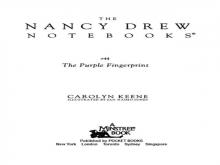 The Purple Fingerprint
The Purple Fingerprint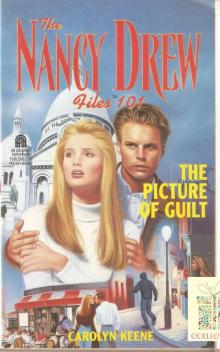 The Picture of Guilt
The Picture of Guilt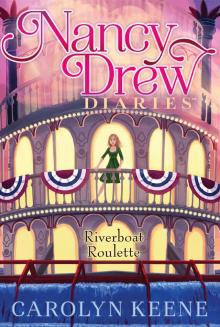 Riverboat Roulette
Riverboat Roulette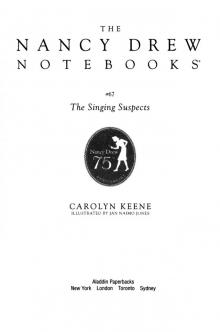 The Singing Suspects
The Singing Suspects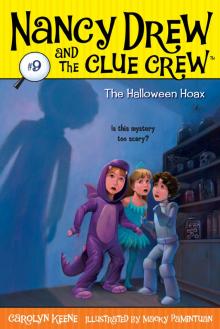 The Halloween Hoax
The Halloween Hoax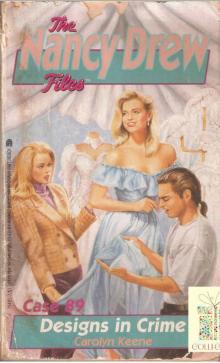 089 Designs in Crime
089 Designs in Crime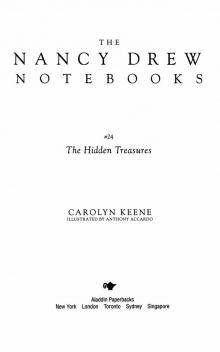 The Hidden Treasures
The Hidden Treasures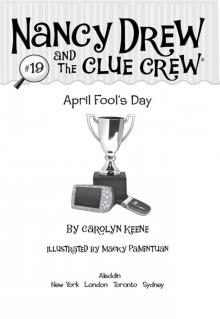 April Fool's Day
April Fool's Day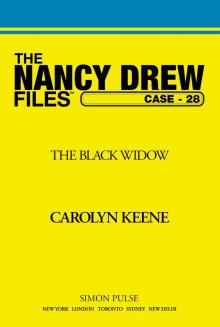 The Black Widow
The Black Widow Final Notes
Final Notes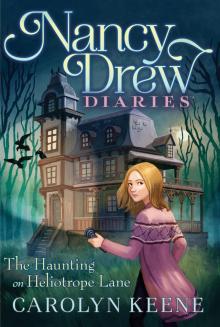 The Haunting on Heliotrope Lane
The Haunting on Heliotrope Lane The Runaway Bride
The Runaway Bride The Ghost of Grey Fox Inn
The Ghost of Grey Fox Inn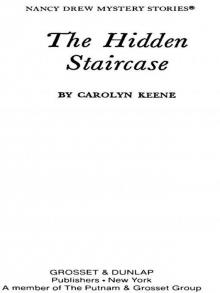 The Hidden Staircase
The Hidden Staircase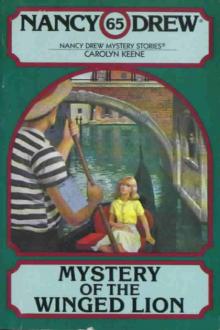 Mystery of the Winged Lion
Mystery of the Winged Lion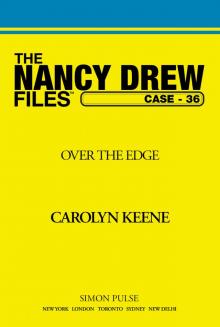 Over the Edge
Over the Edge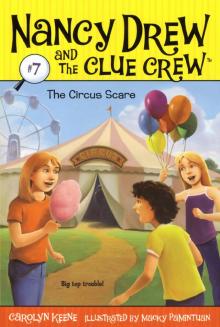 The Circus Scare
The Circus Scare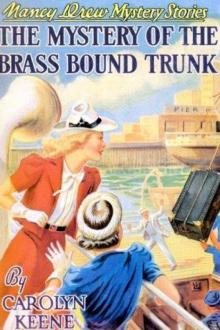 The Mystery of the Brass-Bound Trunk
The Mystery of the Brass-Bound Trunk Ski School Sneak
Ski School Sneak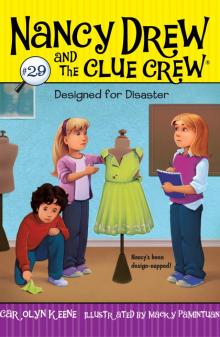 Designed for Disaster
Designed for Disaster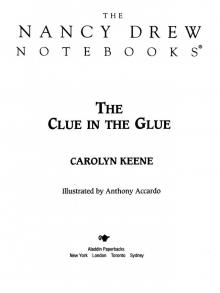 The Clue in the Glue
The Clue in the Glue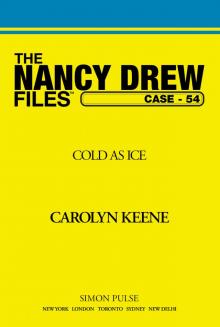 Cold as Ice
Cold as Ice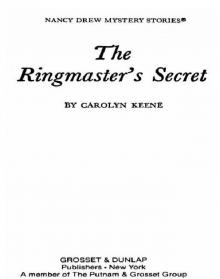 The Ringmaster's Secret
The Ringmaster's Secret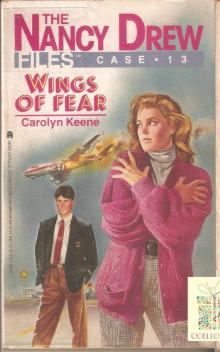 013 Wings of Fear
013 Wings of Fear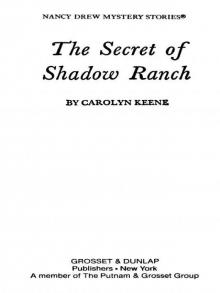 The Secret of Shadow Ranch
The Secret of Shadow Ranch Not Nice on Ice
Not Nice on Ice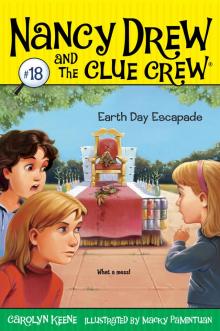 Earth Day Escapade
Earth Day Escapade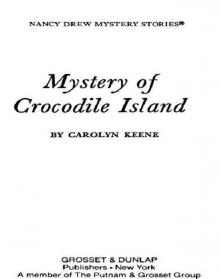 Mystery of Crocodile Island
Mystery of Crocodile Island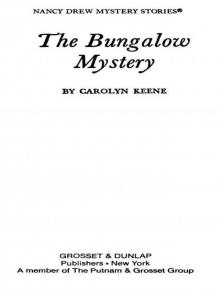 The Bungalow Mystery
The Bungalow Mystery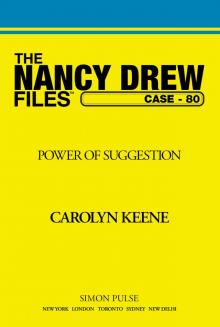 Power of Suggestion
Power of Suggestion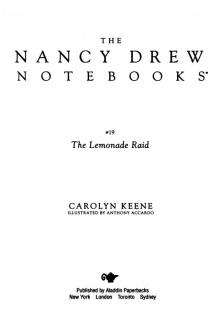 The Lemonade Raid
The Lemonade Raid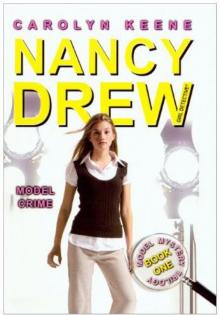 Model Crime
Model Crime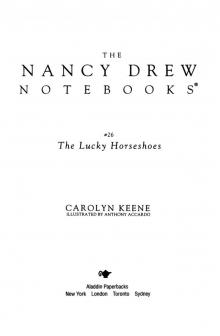 The Lucky Horseshoes
The Lucky Horseshoes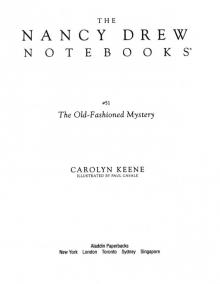 The Secret of the Old Clock
The Secret of the Old Clock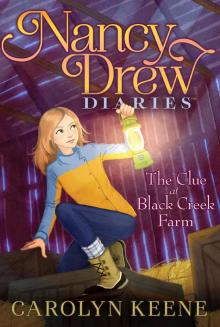 The Clue at Black Creek Farm
The Clue at Black Creek Farm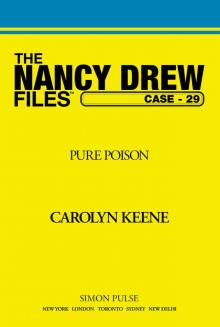 Pure Poison
Pure Poison Nobody's Business
Nobody's Business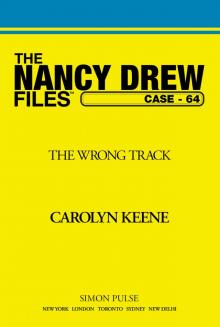 Wrong Track
Wrong Track Chick-Napped!
Chick-Napped!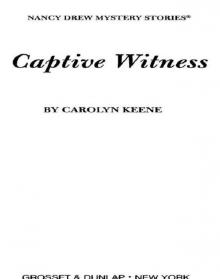 Captive Witness
Captive Witness If Looks Could Kill
If Looks Could Kill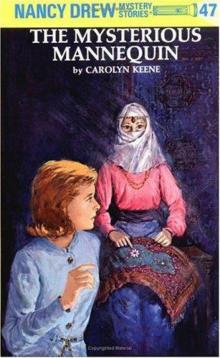 The Mysterious Mannequin
The Mysterious Mannequin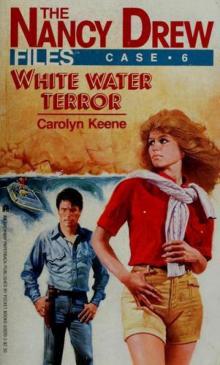 White Water Terror
White Water Terror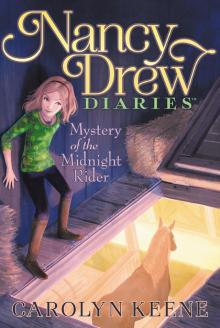 Mystery of the Midnight Rider
Mystery of the Midnight Rider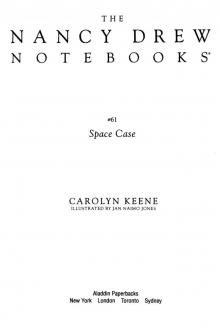 Space Case
Space Case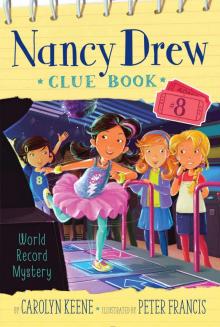 World Record Mystery
World Record Mystery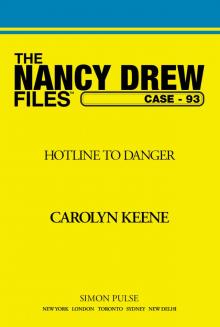 Hotline to Danger
Hotline to Danger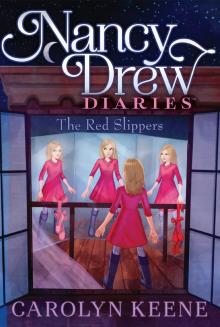 The Red Slippers
The Red Slippers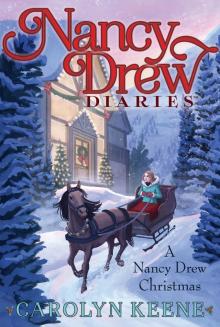 A Crime for Christmas
A Crime for Christmas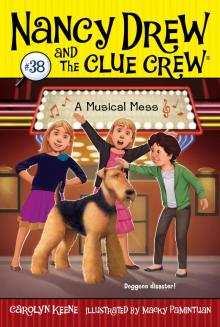 A Musical Mess
A Musical Mess The Dollhouse Mystery
The Dollhouse Mystery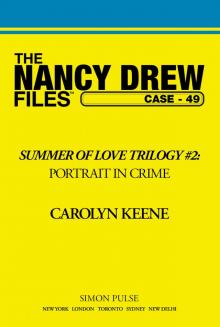 Portrait in Crime
Portrait in Crime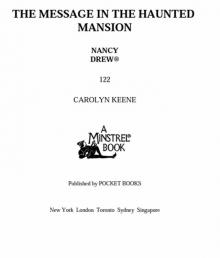 The Message in the Haunted Mansion
The Message in the Haunted Mansion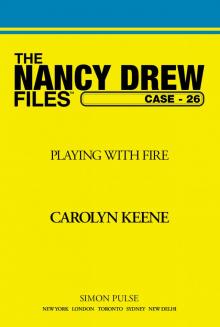 Playing With Fire
Playing With Fire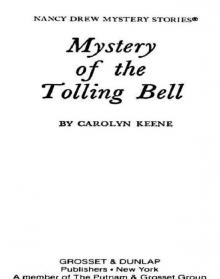 Mystery of the Tolling Bell
Mystery of the Tolling Bell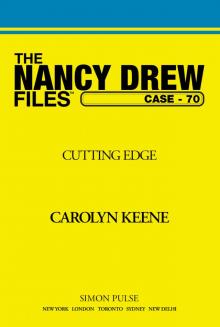 Cutting Edge
Cutting Edge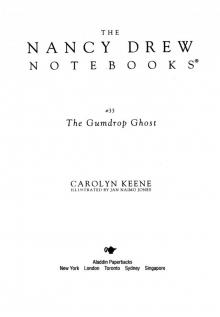 The Gumdrop Ghost
The Gumdrop Ghost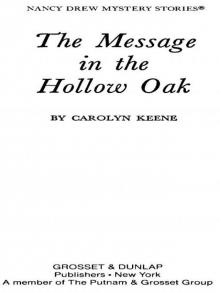 The Message in the Hollow Oak
The Message in the Hollow Oak Trial by Fire
Trial by Fire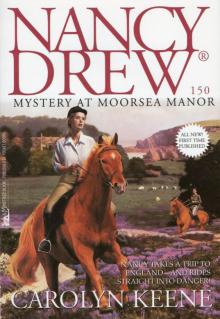 Mystery at Moorsea Manor
Mystery at Moorsea Manor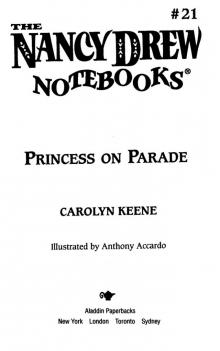 Princess on Parade
Princess on Parade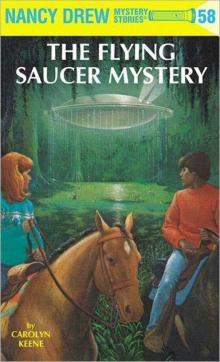 The Flying Saucer Mystery
The Flying Saucer Mystery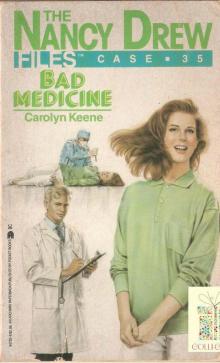 035 Bad Medicine
035 Bad Medicine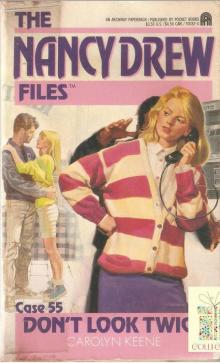 055 Don't Look Twice
055 Don't Look Twice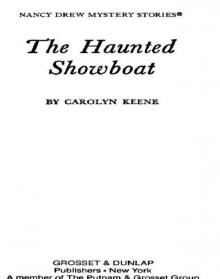 The Haunted Showboat
The Haunted Showboat Out of Bounds
Out of Bounds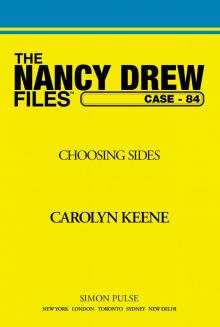 Choosing Sides
Choosing Sides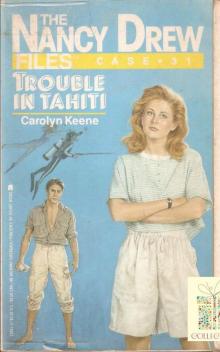 031 Trouble in Tahiti
031 Trouble in Tahiti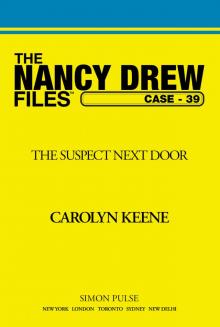 The Suspect Next Door
The Suspect Next Door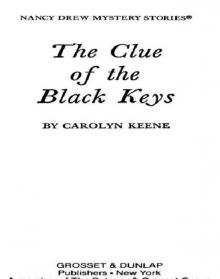 The Clue of the Black Keys
The Clue of the Black Keys The Secret Santa
The Secret Santa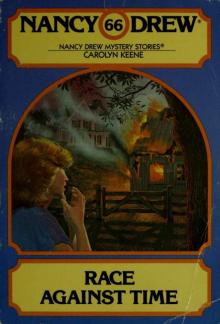 Race Against Time
Race Against Time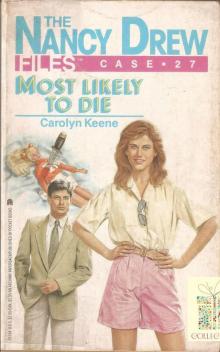 027 Most Likely to Die
027 Most Likely to Die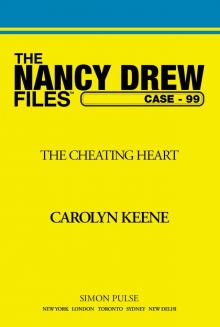 The Cheating Heart
The Cheating Heart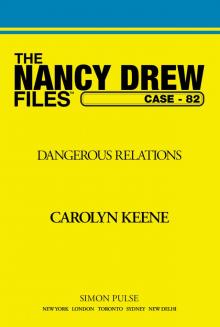 Dangerous Relations
Dangerous Relations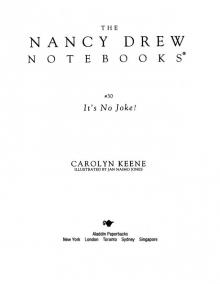 It's No Joke!
It's No Joke! The Mystery of the Mother Wolf
The Mystery of the Mother Wolf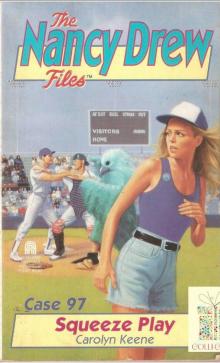 097 Squeeze Play
097 Squeeze Play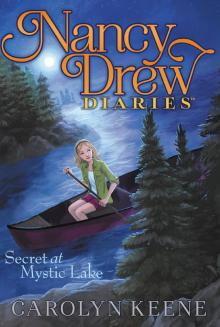 Secret at Mystic Lake
Secret at Mystic Lake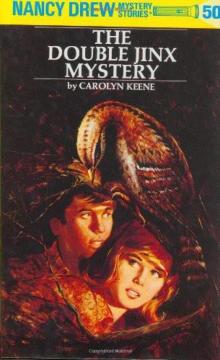 The Double Jinx Mystery
The Double Jinx Mystery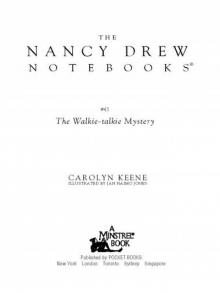 The Walkie Talkie Mystery
The Walkie Talkie Mystery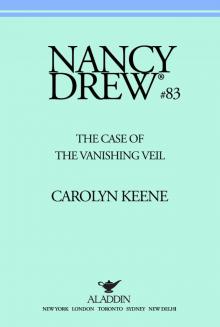 The Case of the Vanishing Veil
The Case of the Vanishing Veil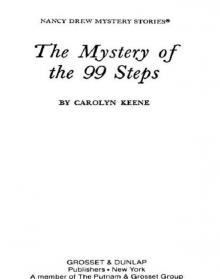 The Mystery of the 99 Steps
The Mystery of the 99 Steps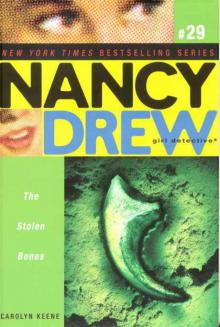 The Stolen Bones
The Stolen Bones The Clue of the Dancing Puppet
The Clue of the Dancing Puppet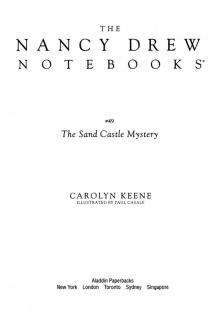 The Sand Castle Mystery
The Sand Castle Mystery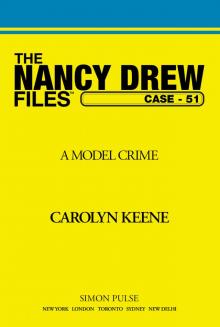 A Model Crime
A Model Crime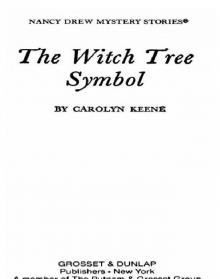 The Witch Tree Symbol
The Witch Tree Symbol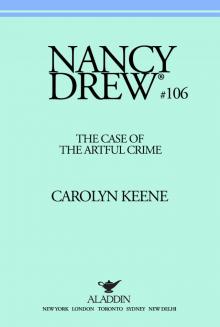 The Case of the Artful Crime
The Case of the Artful Crime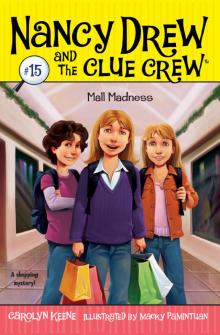 Mall Madness
Mall Madness Swiss Secrets
Swiss Secrets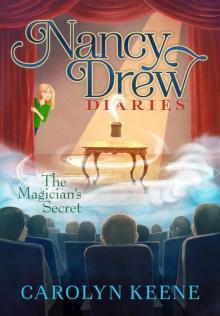 The Magician's Secret
The Magician's Secret Tall, Dark and Deadly
Tall, Dark and Deadly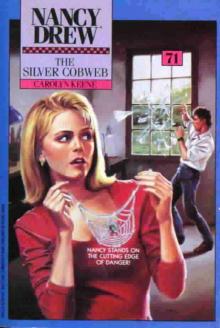 The Silver Cobweb
The Silver Cobweb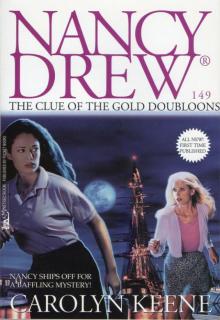 The Clue of the Gold Doubloons
The Clue of the Gold Doubloons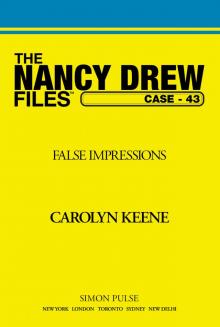 False Impressions
False Impressions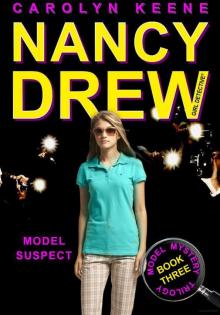 Model Suspect
Model Suspect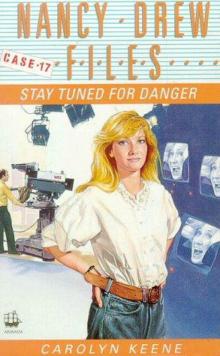 Stay Tuned for Danger
Stay Tuned for Danger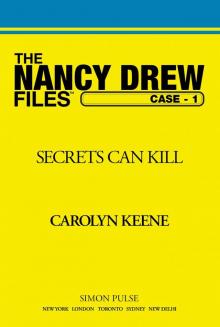 Secrets Can Kill
Secrets Can Kill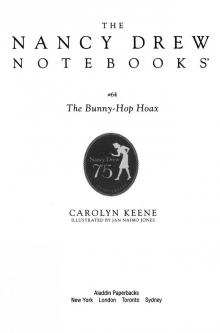 The Bunny-Hop Hoax
The Bunny-Hop Hoax The Cinderella Ballet Mystery
The Cinderella Ballet Mystery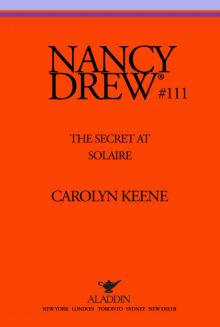 The Secret at Solaire
The Secret at Solaire Trash or Treasure?
Trash or Treasure? The Missing Horse Mystery
The Missing Horse Mystery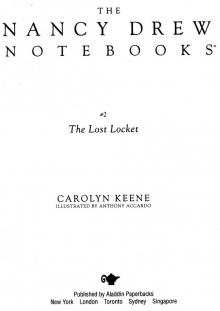 The Lost Locket
The Lost Locket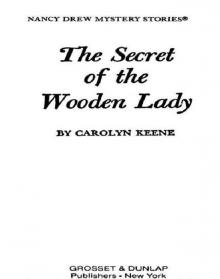 The Secret of the Wooden Lady
The Secret of the Wooden Lady Password to Larkspur Lane
Password to Larkspur Lane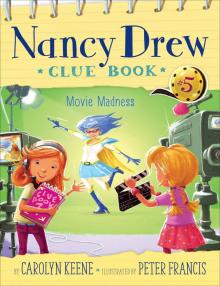 Movie Madness
Movie Madness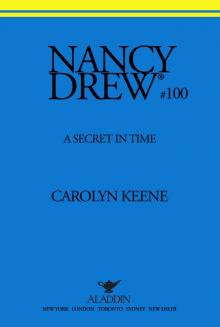 A Secret in Time
A Secret in Time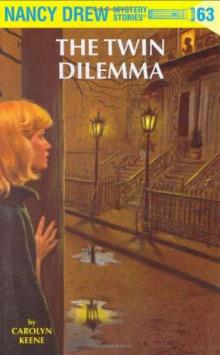 The Twin Dilemma
The Twin Dilemma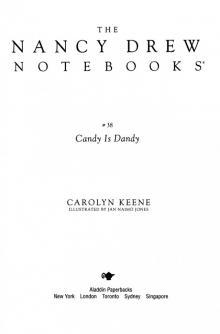 Candy Is Dandy
Candy Is Dandy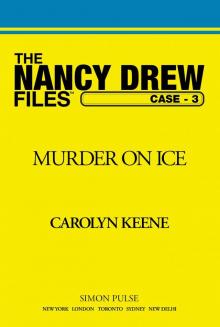 Murder on Ice
Murder on Ice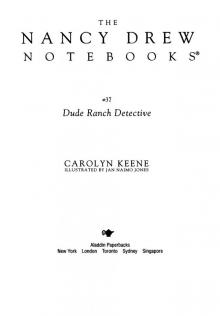 Dude Ranch Detective
Dude Ranch Detective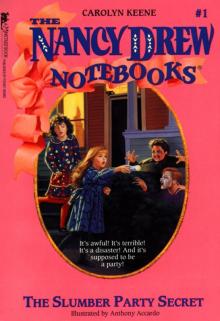 The Slumber Party Secret
The Slumber Party Secret The Clue in the Old Stagecoach
The Clue in the Old Stagecoach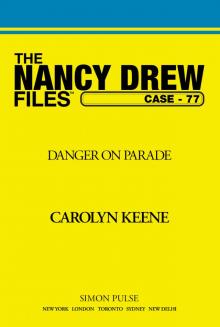 Danger on Parade
Danger on Parade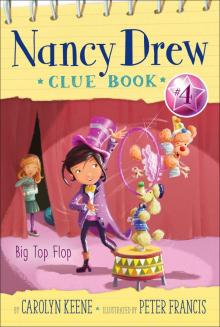 Big Top Flop
Big Top Flop Strangers on a Train
Strangers on a Train 087 Moving Target
087 Moving Target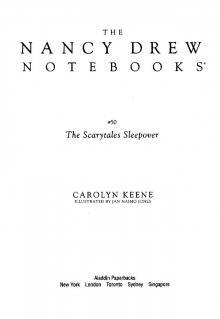 The Scarytales Sleepover
The Scarytales Sleepover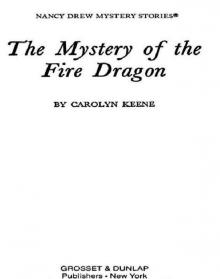 The Mystery of the Fire Dragon
The Mystery of the Fire Dragon The Carousel Mystery
The Carousel Mystery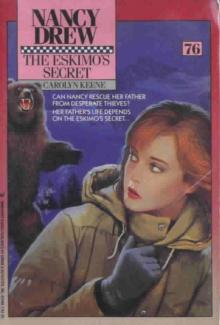 The Eskimo's Secret
The Eskimo's Secret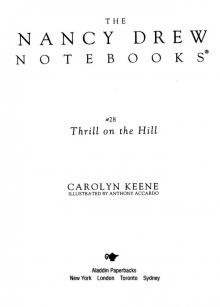 Thrill on the Hill
Thrill on the Hill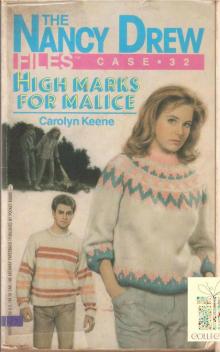 032 High Marks for Malice
032 High Marks for Malice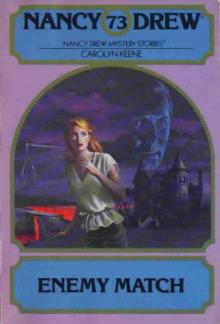 Enemy Match
Enemy Match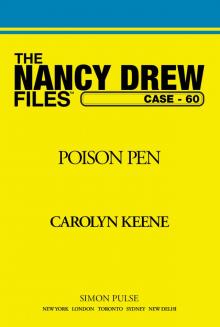 Poison Pen
Poison Pen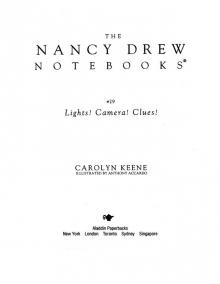 Lights, Camera . . . Cats!
Lights, Camera . . . Cats! Lost in the Everglades
Lost in the Everglades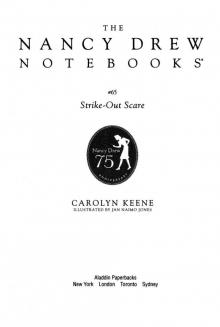 Strike-Out Scare
Strike-Out Scare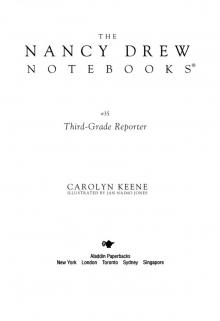 Third-Grade Reporter
Third-Grade Reporter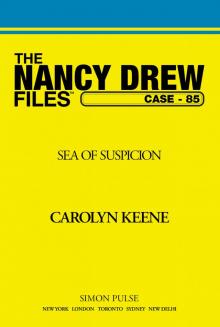 Sea of Suspicion
Sea of Suspicion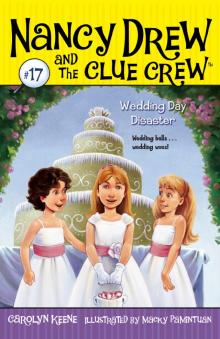 Wedding Day Disaster
Wedding Day Disaster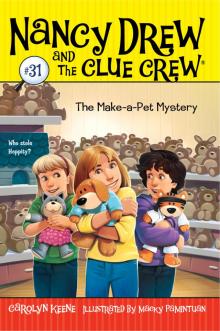 The Make-A-Pet Mystery
The Make-A-Pet Mystery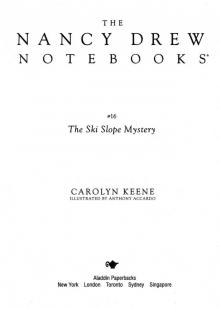 The Ski Slope Mystery
The Ski Slope Mystery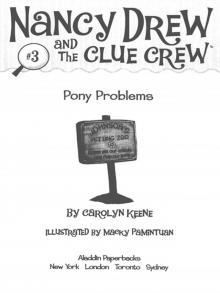 Pony Problems
Pony Problems Candy Kingdom Chaos
Candy Kingdom Chaos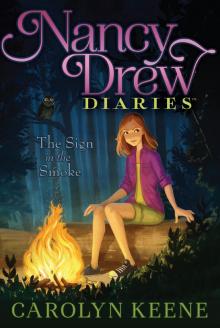 The Sign in the Smoke
The Sign in the Smoke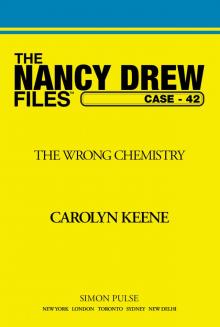 The Wrong Chemistry
The Wrong Chemistry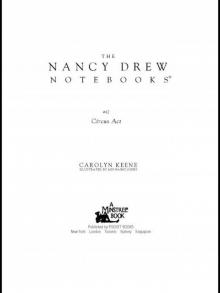 Circus Act
Circus Act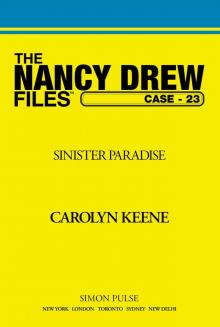 Sinister Paradise
Sinister Paradise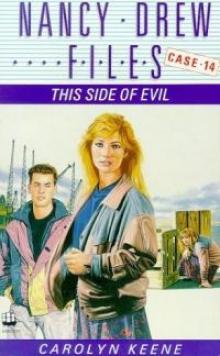 This Side of Evil
This Side of Evil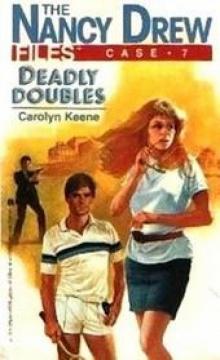 Deadly Doubles
Deadly Doubles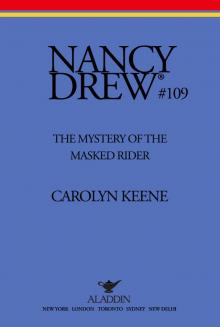 The Mystery of the Masked Rider
The Mystery of the Masked Rider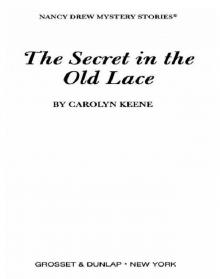 The Secret in the Old Lace
The Secret in the Old Lace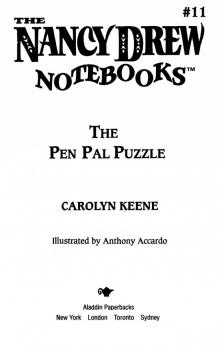 The Pen Pal Puzzle
The Pen Pal Puzzle Without a Trace
Without a Trace Whose Pet Is Best?
Whose Pet Is Best?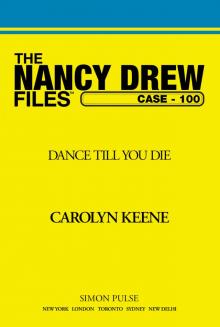 Dance Till You Die
Dance Till You Die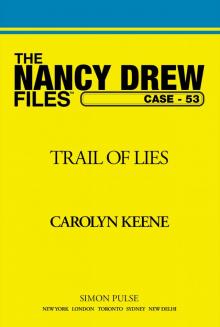 Trail of Lies
Trail of Lies Mystery of the Glowing Eye
Mystery of the Glowing Eye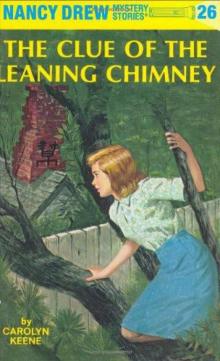 The Clue of the Leaning Chimney
The Clue of the Leaning Chimney The Crook Who Took the Book
The Crook Who Took the Book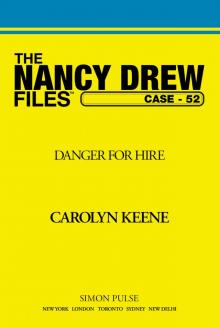 Danger for Hire
Danger for Hire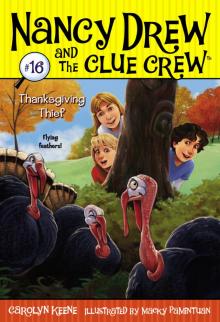 Thanksgiving Thief
Thanksgiving Thief Intruder!
Intruder!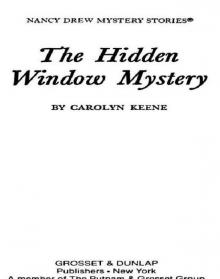 The Hidden Window Mystery
The Hidden Window Mystery Win, Place or Die
Win, Place or Die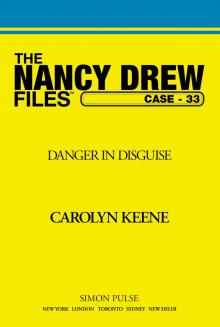 Danger in Disguise
Danger in Disguise The Best Detective
The Best Detective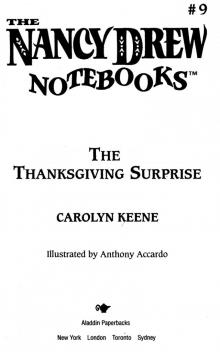 The Thanksgiving Surprise
The Thanksgiving Surprise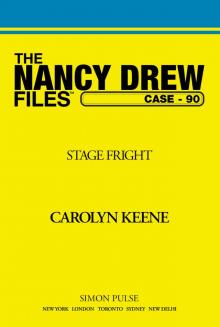 Stage Fright
Stage Fright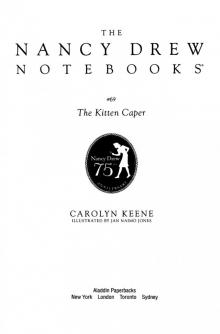 The Kitten Caper
The Kitten Caper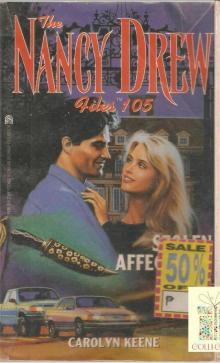 Stolen Affections
Stolen Affections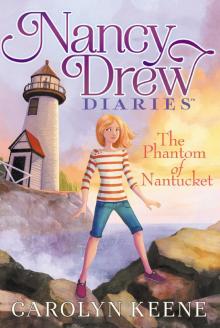 The Phantom of Nantucket
The Phantom of Nantucket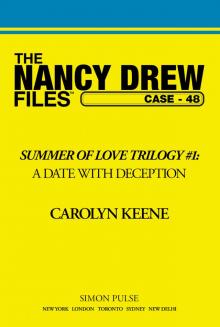 Date With Deception
Date With Deception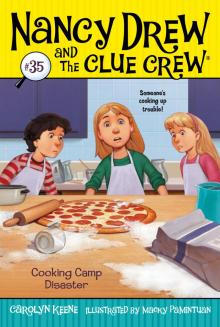 Cooking Camp Disaster
Cooking Camp Disaster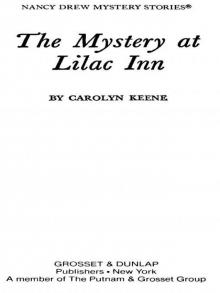 The Mystery at Lilac Inn
The Mystery at Lilac Inn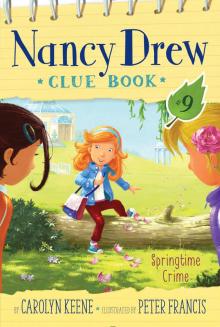 Springtime Crime
Springtime Crime Action!
Action!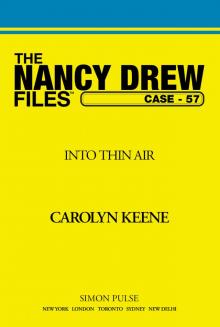 Into Thin Air
Into Thin Air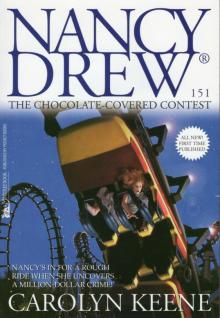 The Chocolate-Covered Contest
The Chocolate-Covered Contest 025 Rich and Dangerous
025 Rich and Dangerous Bad Times, Big Crimes
Bad Times, Big Crimes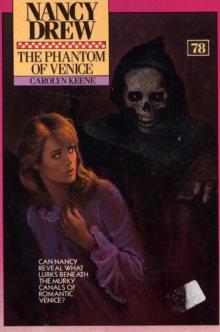 078 The Phantom Of Venice
078 The Phantom Of Venice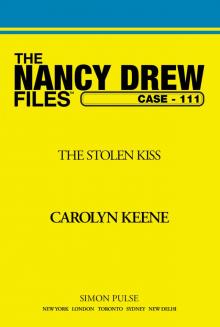 The Stolen Kiss
The Stolen Kiss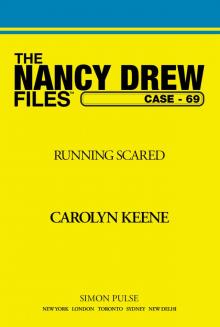 Running Scared
Running Scared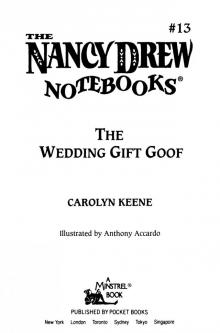 The Wedding Gift Goof
The Wedding Gift Goof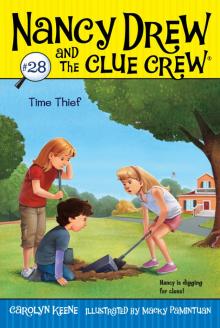 Time Thief
Time Thief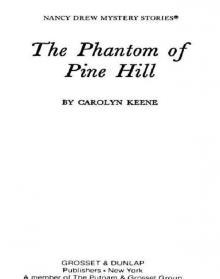 The Phantom of Pine Hill
The Phantom of Pine Hill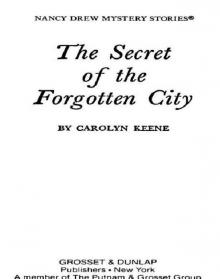 The Secret of the Forgotten City
The Secret of the Forgotten City The Emerald-Eyed Cat Mystery
The Emerald-Eyed Cat Mystery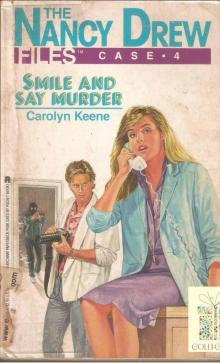 004 Smile and Say Murder
004 Smile and Say Murder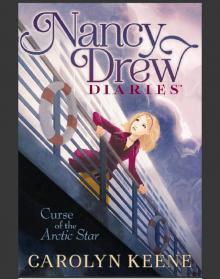 Curse of the Arctic Star
Curse of the Arctic Star Dinosaur Alert!
Dinosaur Alert!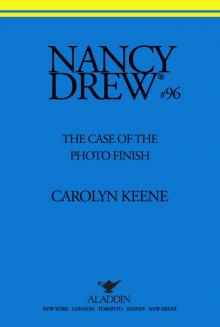 The Case of the Photo Finish
The Case of the Photo Finish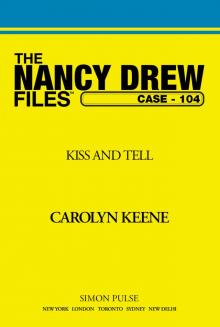 Kiss and Tell
Kiss and Tell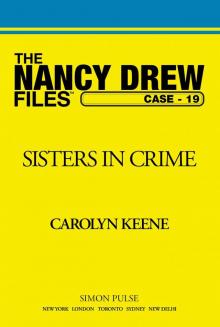 Sisters in Crime
Sisters in Crime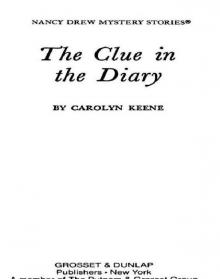 The Clue in the Diary
The Clue in the Diary 084 Choosing Sides
084 Choosing Sides Haunting of Horse Island
Haunting of Horse Island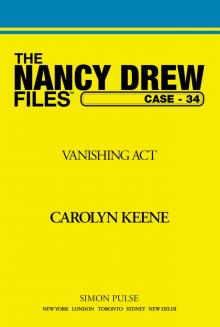 Vanishing Act
Vanishing Act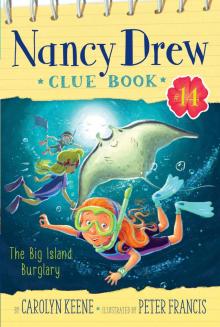 The Big Island Burglary
The Big Island Burglary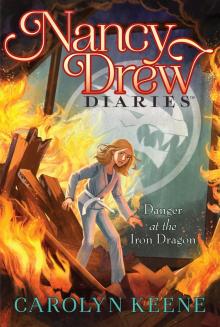 Danger at the Iron Dragon
Danger at the Iron Dragon Pets on Parade
Pets on Parade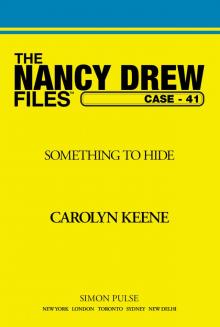 Something to Hide
Something to Hide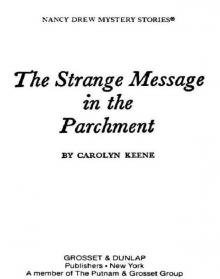 The Strange Message in the Parchment
The Strange Message in the Parchment On the Trail of Trouble
On the Trail of Trouble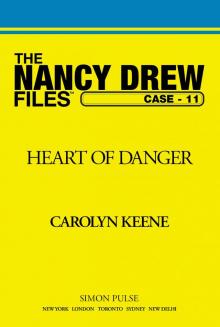 Heart of Danger
Heart of Danger The Snowman Surprise
The Snowman Surprise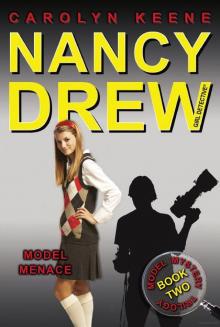 Model Menace
Model Menace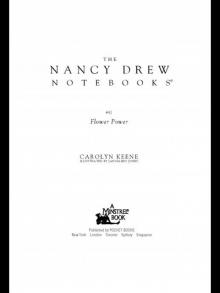 Flower Power
Flower Power The Great Goat Gaffe
The Great Goat Gaffe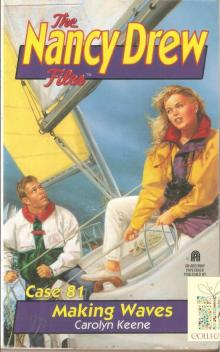 081 Making Waves
081 Making Waves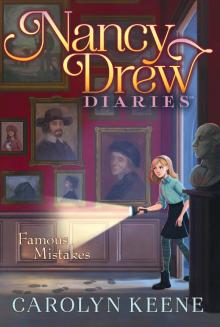 Famous Mistakes
Famous Mistakes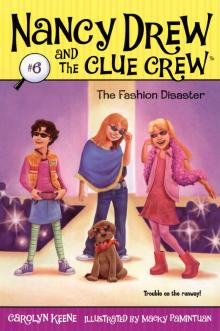 The Fashion Disaster
The Fashion Disaster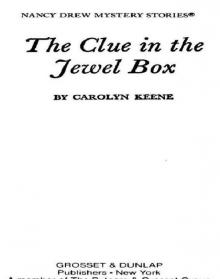 The Clue in the Jewel Box
The Clue in the Jewel Box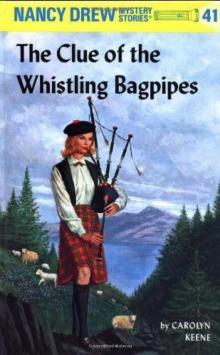 The Clue of the Whistling Bagpipes
The Clue of the Whistling Bagpipes Make No Mistake
Make No Mistake Greek Odyssey
Greek Odyssey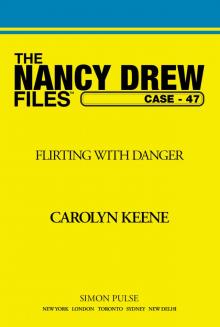 Flirting With Danger
Flirting With Danger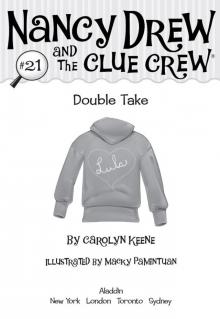 Double Take
Double Take Trouble Takes the Cake
Trouble Takes the Cake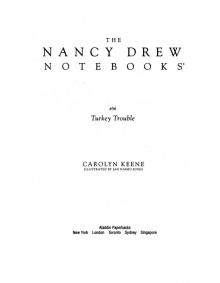 Turkey Trouble
Turkey Trouble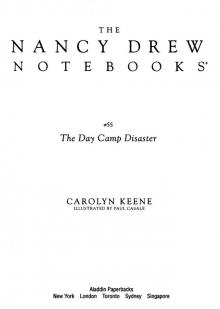 The Day Camp Disaster
The Day Camp Disaster The Secret in the Old Attic
The Secret in the Old Attic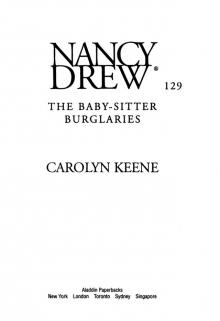 The Baby-Sitter Burglaries
The Baby-Sitter Burglaries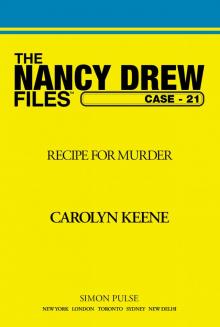 Recipe for Murder
Recipe for Murder The Secret of the Scarecrow
The Secret of the Scarecrow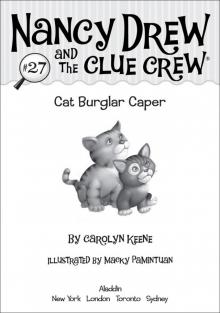 Cat Burglar Caper
Cat Burglar Caper Turkey Trot Plot
Turkey Trot Plot Scent of Danger
Scent of Danger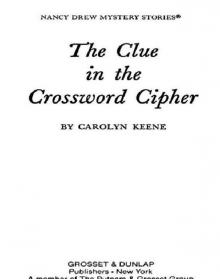 The Clue in the Crossword Cipher
The Clue in the Crossword Cipher 010 Buried Secrets
010 Buried Secrets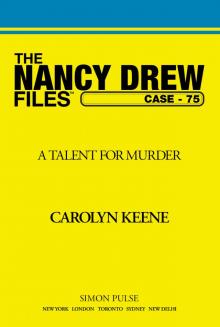 A Talent for Murder
A Talent for Murder The Triple Hoax
The Triple Hoax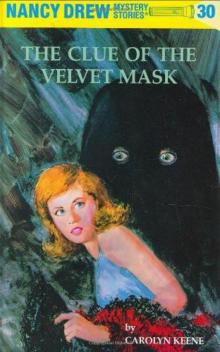 The Clue of the Velvet Mask
The Clue of the Velvet Mask Last Lemonade Standing
Last Lemonade Standing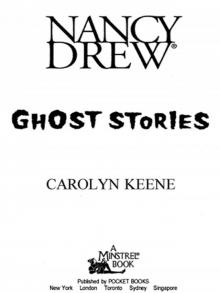 The Ghost of Blackwood Hall
The Ghost of Blackwood Hall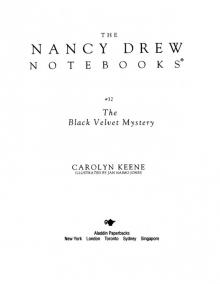 The Black Velvet Mystery
The Black Velvet Mystery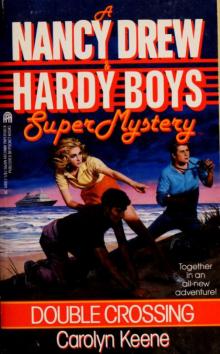 Double Crossing
Double Crossing Hidden Meanings
Hidden Meanings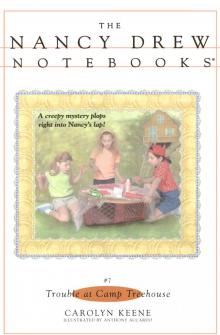 Trouble at Camp Treehouse
Trouble at Camp Treehouse An Instinct for Trouble
An Instinct for Trouble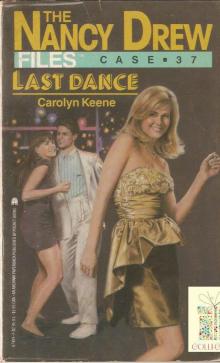 037 Last Dance
037 Last Dance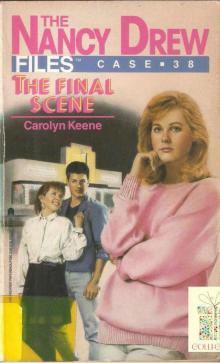 038 The Final Scene
038 The Final Scene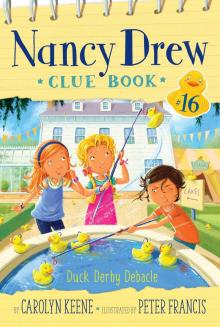 Duck Derby Debacle
Duck Derby Debacle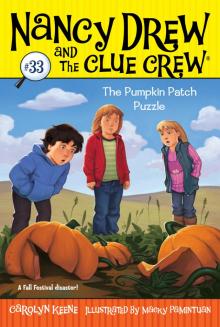 The Pumpkin Patch Puzzle
The Pumpkin Patch Puzzle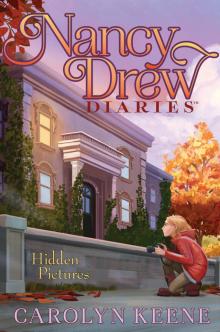 Hidden Pictures
Hidden Pictures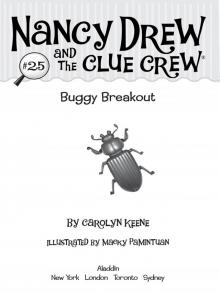 Buggy Breakout
Buggy Breakout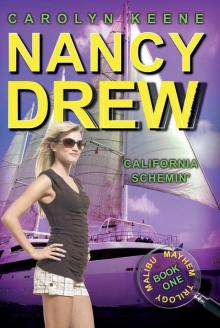 California Schemin'
California Schemin'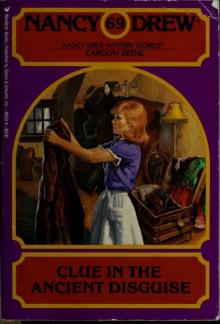 Clue in the Ancient Disguise
Clue in the Ancient Disguise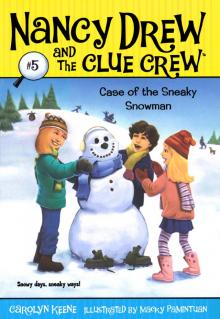 Case of the Sneaky Snowman
Case of the Sneaky Snowman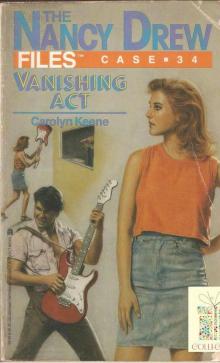 034 Vanishing Act
034 Vanishing Act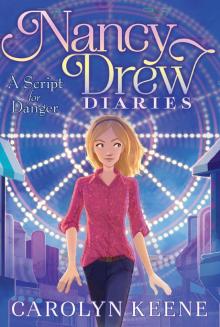 A Script for Danger
A Script for Danger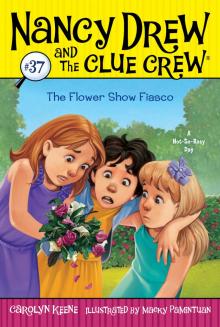 The Flower Show Fiasco
The Flower Show Fiasco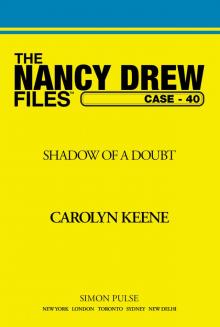 Shadow of a Doubt
Shadow of a Doubt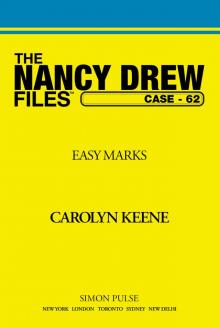 Easy Marks
Easy Marks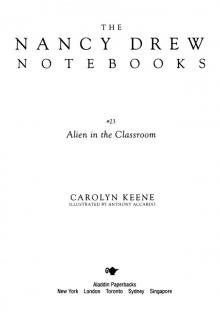 Alien in the Classroom
Alien in the Classroom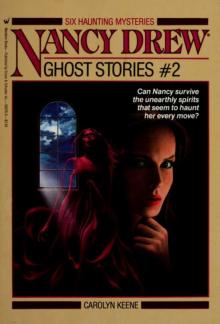 Ghost Stories, #2 (Nancy Drew)
Ghost Stories, #2 (Nancy Drew) The Bike Race Mystery
The Bike Race Mystery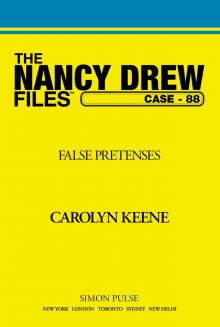 False Pretenses
False Pretenses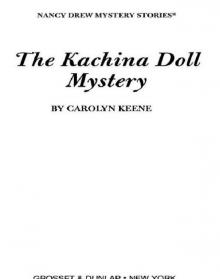 The Kachina Doll Mystery
The Kachina Doll Mystery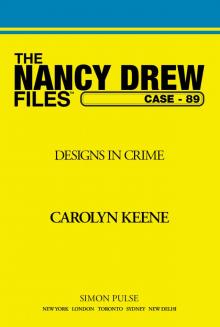 Designs in Crime
Designs in Crime False Notes
False Notes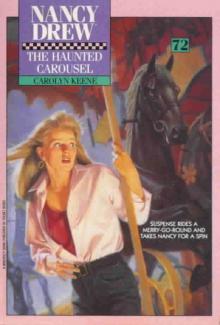 The Haunted Carousel
The Haunted Carousel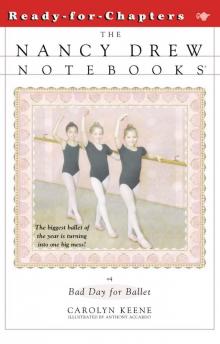 Bad Day for Ballet
Bad Day for Ballet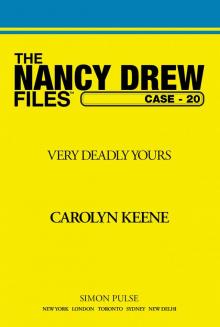 Very Deadly Yours
Very Deadly Yours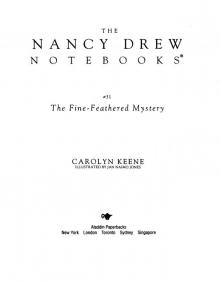 The Fine-Feathered Mystery
The Fine-Feathered Mystery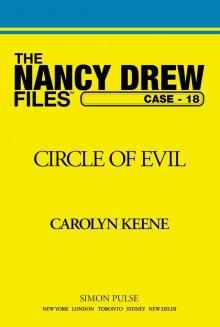 Circle of Evil
Circle of Evil The Crooked Banister
The Crooked Banister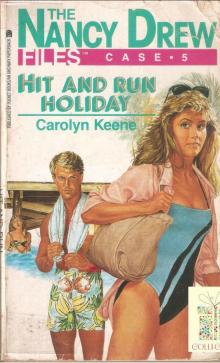 005 Hit and Run Holiday
005 Hit and Run Holiday The Spider Sapphire Mystery
The Spider Sapphire Mystery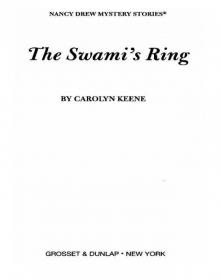 The Swami's Ring
The Swami's Ring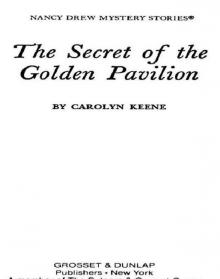 The Secret of the Golden Pavilion
The Secret of the Golden Pavilion Recipe for Trouble
Recipe for Trouble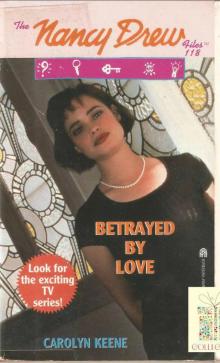 Betrayed by Love
Betrayed by Love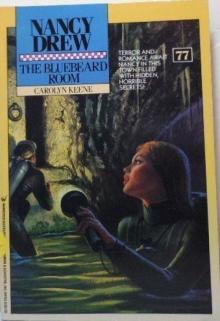 The Bluebeard Room
The Bluebeard Room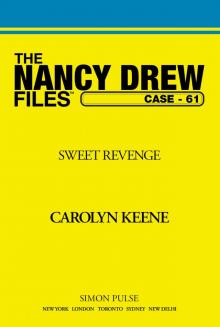 Sweet Revenge
Sweet Revenge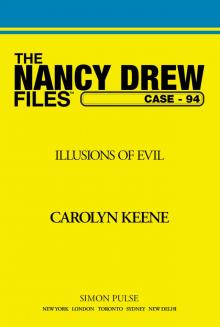 Illusions of Evil
Illusions of Evil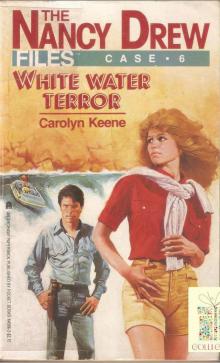 006 White Water Terror
006 White Water Terror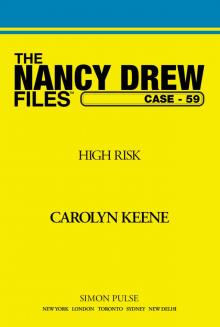 High Risk
High Risk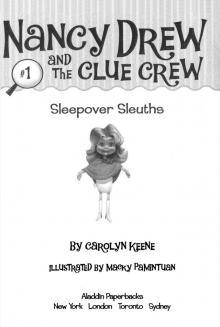 Sleepover Sleuths
Sleepover Sleuths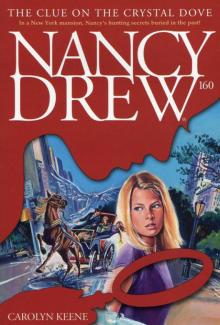 The Clue on the Crystal Dove
The Clue on the Crystal Dove The Stolen Unicorn
The Stolen Unicorn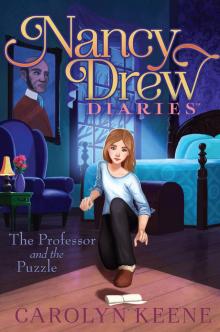 The Professor and the Puzzle
The Professor and the Puzzle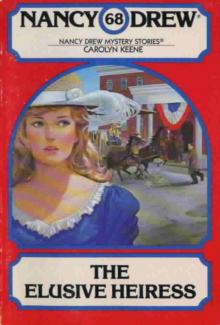 The Elusive Heiress
The Elusive Heiress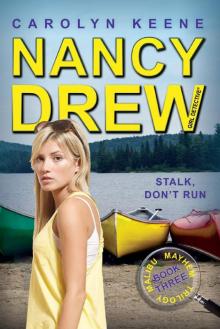 Stalk, Don't Run
Stalk, Don't Run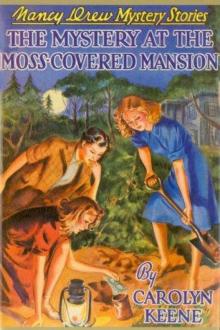 The Mystery at the Moss-Covered Mansion
The Mystery at the Moss-Covered Mansion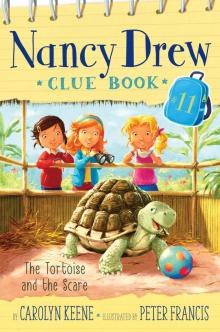 The Tortoise and the Scare
The Tortoise and the Scare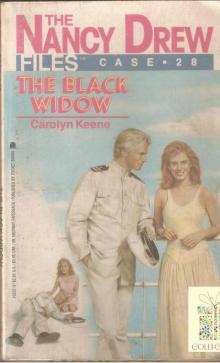 028 The Black Widow
028 The Black Widow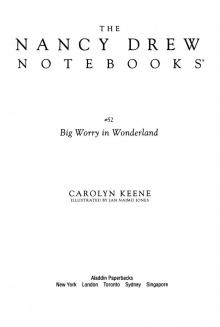 Big Worry in Wonderland
Big Worry in Wonderland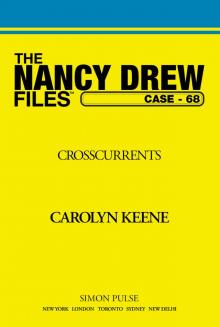 Crosscurrents
Crosscurrents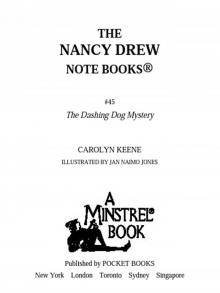 The Dashing Dog Mystery
The Dashing Dog Mystery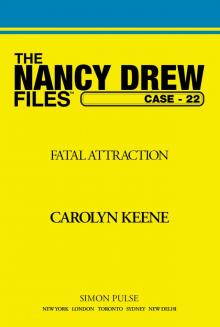 Fatal Attraction
Fatal Attraction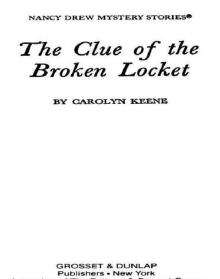 The Clue of the Broken Locket
The Clue of the Broken Locket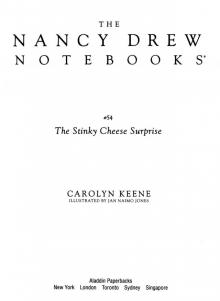 The Stinky Cheese Surprise
The Stinky Cheese Surprise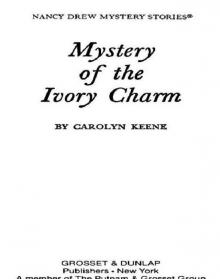 Mystery of the Ivory Charm
Mystery of the Ivory Charm A Race Against Time
A Race Against Time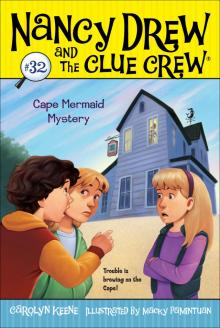 Cape Mermaid Mystery
Cape Mermaid Mystery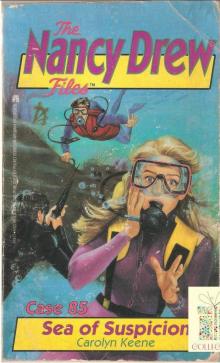 085 Sea of Suspicion
085 Sea of Suspicion 058 Hot Pursuit
058 Hot Pursuit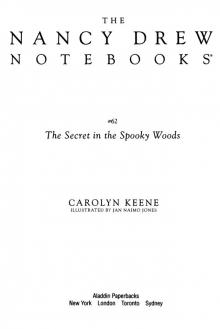 The Secret in the Spooky Woods
The Secret in the Spooky Woods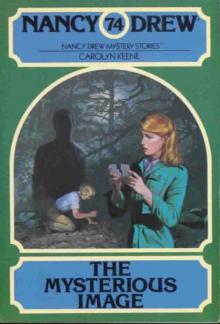 The Mysterious Image
The Mysterious Image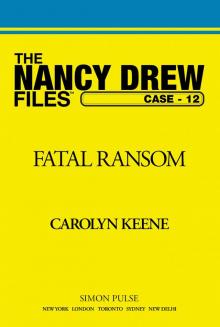 Fatal Ransom
Fatal Ransom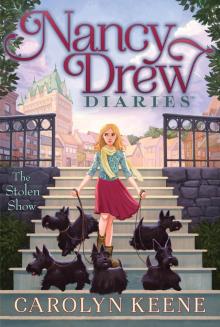 The Stolen Show
The Stolen Show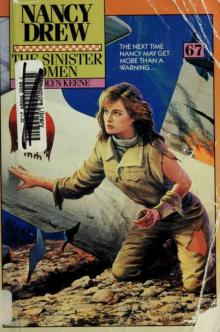 The Sinister Omen
The Sinister Omen The Secret of Mirror Bay
The Secret of Mirror Bay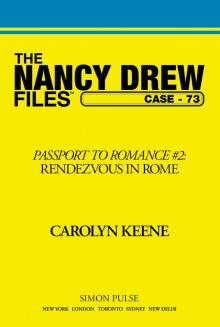 Rendezvous in Rome
Rendezvous in Rome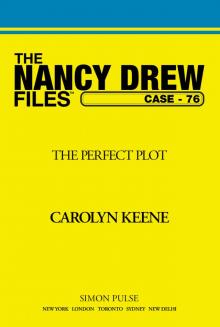 The Perfect Plot
The Perfect Plot The Mystery of Misty Canyon
The Mystery of Misty Canyon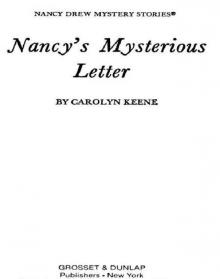 Nancy's Mysterious Letter
Nancy's Mysterious Letter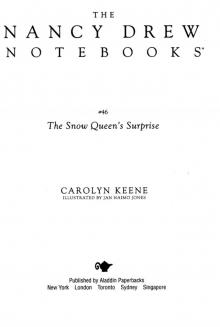 The Snow Queen's Surprise
The Snow Queen's Surprise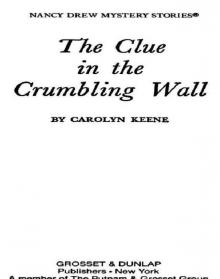 The Clue in the Crumbling Wall
The Clue in the Crumbling Wall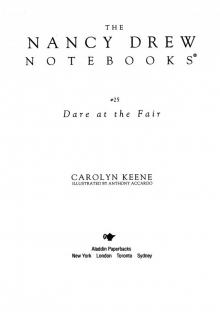 Dare at the Fair
Dare at the Fair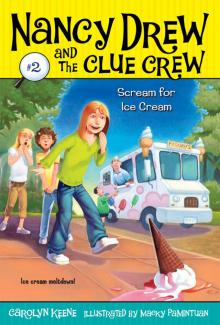 Scream for Ice Cream
Scream for Ice Cream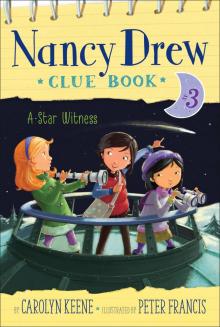 A Star Witness
A Star Witness 002 Deadly Intent
002 Deadly Intent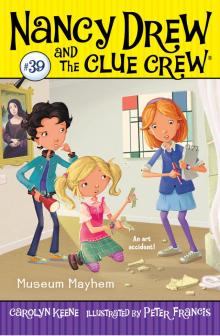 Museum Mayhem
Museum Mayhem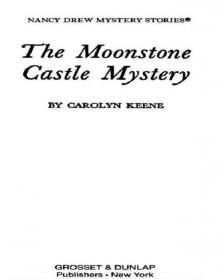 The Moonstone Castle Mystery
The Moonstone Castle Mystery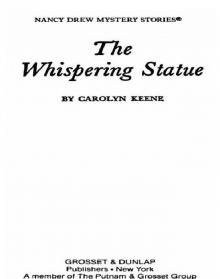 The Whispering Statue
The Whispering Statue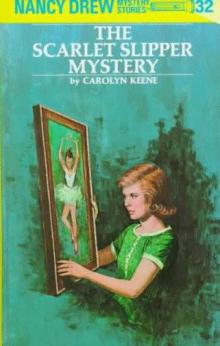 The Scarlet Slipper Mystery
The Scarlet Slipper Mystery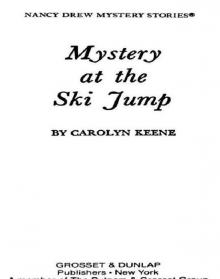 Mystery at the Ski Jump
Mystery at the Ski Jump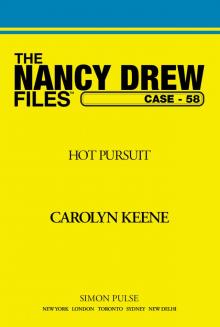 Hot Pursuit
Hot Pursuit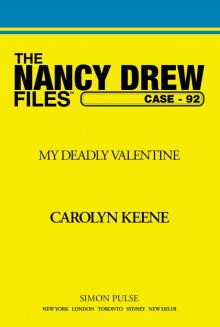 My Deadly Valentine
My Deadly Valentine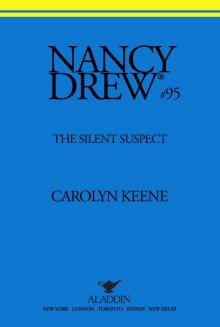 The Silent Suspect
The Silent Suspect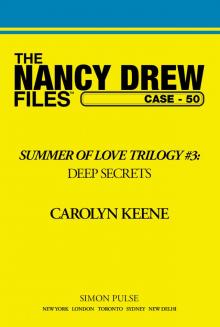 Deep Secrets
Deep Secrets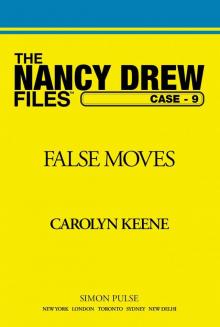 False Moves
False Moves The Zoo Crew
The Zoo Crew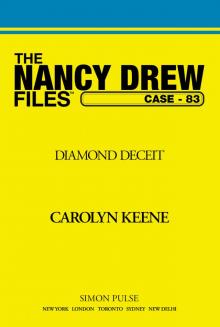 Diamond Deceit
Diamond Deceit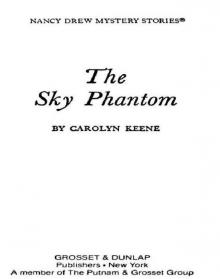 The Sky Phantom
The Sky Phantom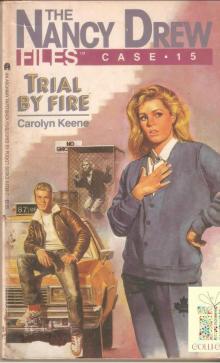 015 Trial by Fire
015 Trial by Fire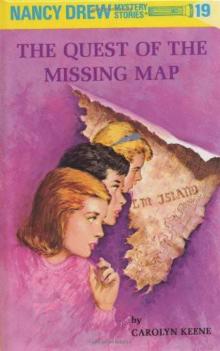 The Quest of the Missing Map
The Quest of the Missing Map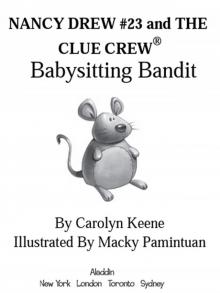 Babysitting Bandit
Babysitting Bandit Don't Look Twice
Don't Look Twice Never Say Die
Never Say Die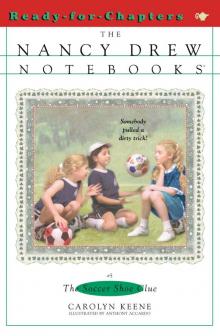 The Soccer Shoe Clue
The Soccer Shoe Clue Pool Party Puzzler
Pool Party Puzzler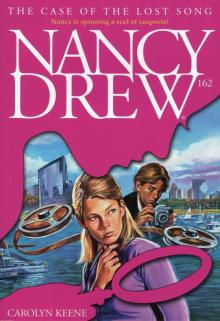 The Case of the Lost Song
The Case of the Lost Song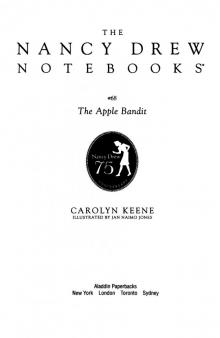 The Apple Bandit
The Apple Bandit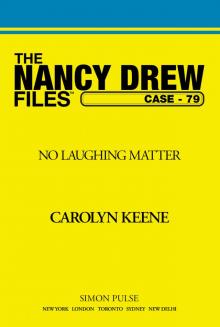 No Laughing Matter
No Laughing Matter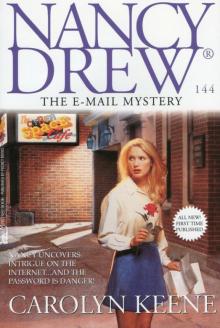 The Thirteenth Pearl
The Thirteenth Pearl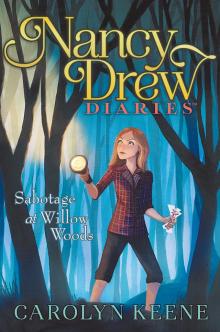 Sabotage at Willow Woods
Sabotage at Willow Woods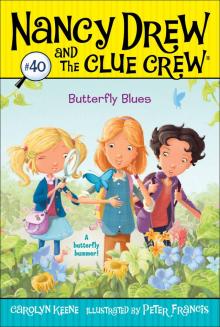 Butterfly Blues
Butterfly Blues Model Crime 1
Model Crime 1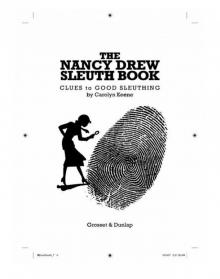 The Nancy Drew Sleuth Book
The Nancy Drew Sleuth Book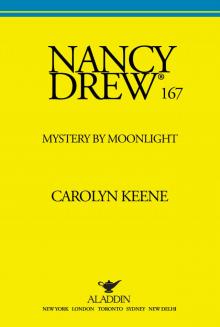 Mystery by Moonlight
Mystery by Moonlight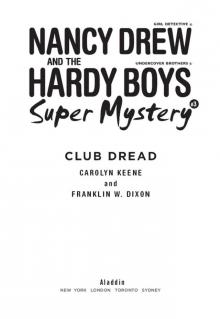 Club Dread
Club Dread The Clue in the Camera
The Clue in the Camera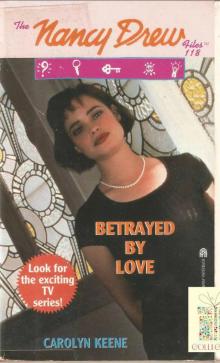 118 Betrayed By Love
118 Betrayed By Love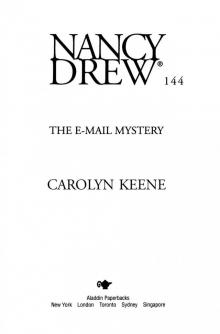 The E-Mail Mystery (Nancy Drew Book 144)
The E-Mail Mystery (Nancy Drew Book 144) Stay Tuned for Danger: Circle of Evil
Stay Tuned for Danger: Circle of Evil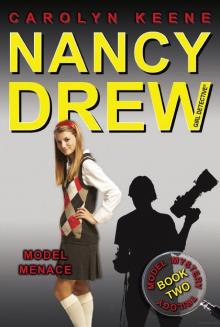 Model Menace 2
Model Menace 2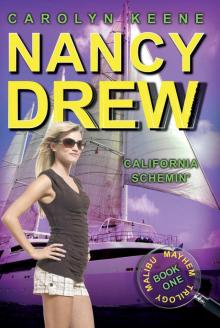 California Schemin': Book One in the Malibu Mayhem Trilogy
California Schemin': Book One in the Malibu Mayhem Trilogy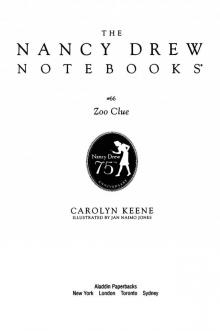 Zoo Clue (Nancy Drew Notebooks)
Zoo Clue (Nancy Drew Notebooks)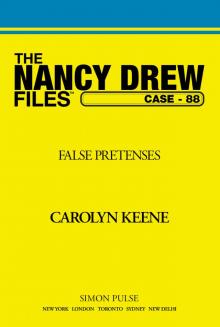 False Pretences
False Pretences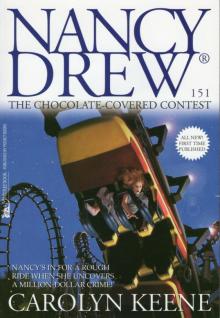 151 The Chocolate-Covered Contest
151 The Chocolate-Covered Contest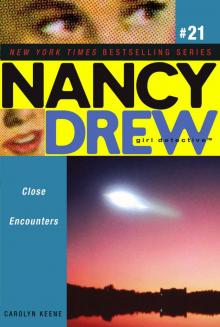 Close Encounters
Close Encounters The Emeral-Eyed Cat Mystery
The Emeral-Eyed Cat Mystery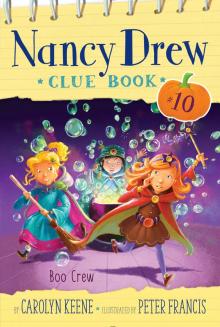 Boo Crew
Boo Crew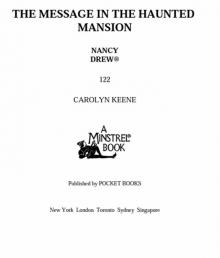 The Message in the Haunted Mansion (Nancy Drew Book 122)
The Message in the Haunted Mansion (Nancy Drew Book 122) A Nancy Drew Christmas
A Nancy Drew Christmas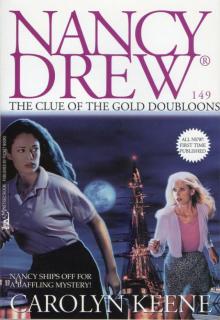 149 The Clue Of The Gold Doubloons
149 The Clue Of The Gold Doubloons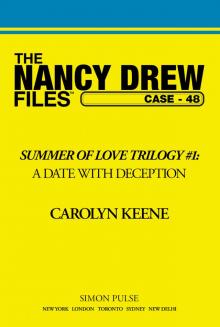 A Date with Deception
A Date with Deception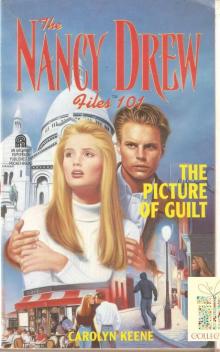 101 The Picture of Guilt
101 The Picture of Guilt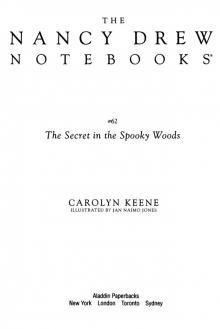 The Secret in the Spooky Woods (Nancy Drew Notebooks Book 62)
The Secret in the Spooky Woods (Nancy Drew Notebooks Book 62)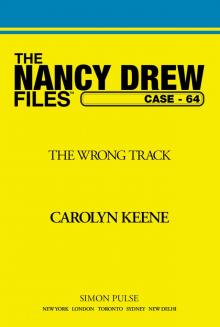 The Wrong Track
The Wrong Track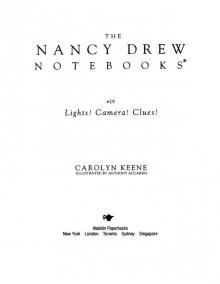 Lights! Camera! Clues!
Lights! Camera! Clues!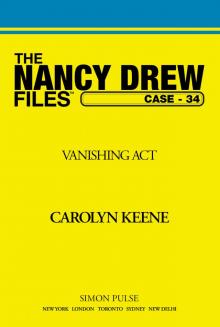 The Vanishing Act
The Vanishing Act Lights, Camera . . .
Lights, Camera . . . Model Suspect 3
Model Suspect 3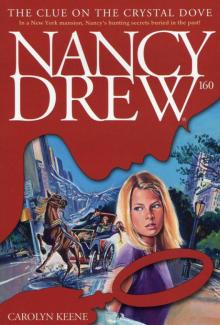 160 The Clue On The Crystal Dove
160 The Clue On The Crystal Dove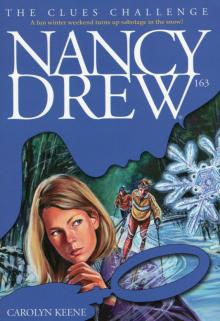 163 The Clues Challenge
163 The Clues Challenge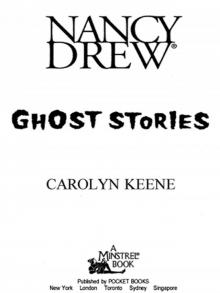 Ghost Stories (Nancy Drew)
Ghost Stories (Nancy Drew)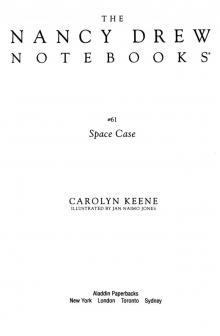 Space Case (Nancy Drew Notebooks Book 61)
Space Case (Nancy Drew Notebooks Book 61)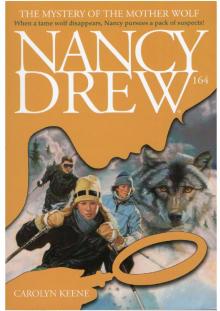 164 The Mystery Of The Mother Wolf
164 The Mystery Of The Mother Wolf 148 On The Trail Of Trouble
148 On The Trail Of Trouble The Walkie-Talkie Mystery
The Walkie-Talkie Mystery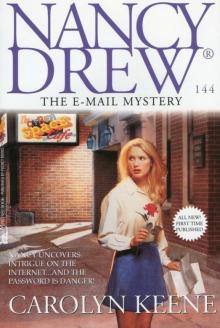 The E-Mail Mystery
The E-Mail Mystery Intruder (Nancy Drew (All New) Girl Detective)
Intruder (Nancy Drew (All New) Girl Detective)![The Stolen Relic [Nancy Drew Girl Detective 007] Read online](http://i1.bookreadfree.com/i2/04/11/the_stolen_relic_nancy_drew_girl_detective_007_preview.jpg) The Stolen Relic [Nancy Drew Girl Detective 007]
The Stolen Relic [Nancy Drew Girl Detective 007] 105 Stolen Affections
105 Stolen Affections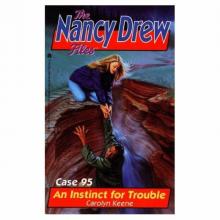 An Instict for Trouble
An Instict for Trouble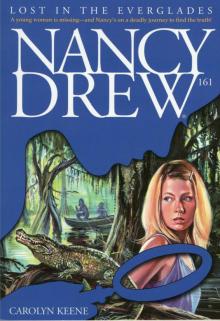 161 Lost In The Everglades
161 Lost In The Everglades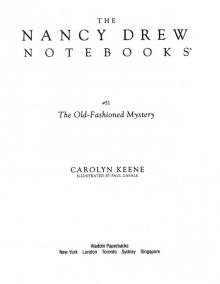 The Old-Fashioned Mystery
The Old-Fashioned Mystery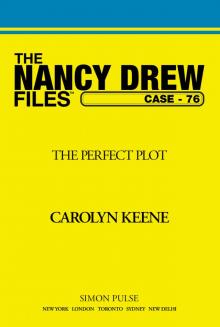 Perfect Plot
Perfect Plot